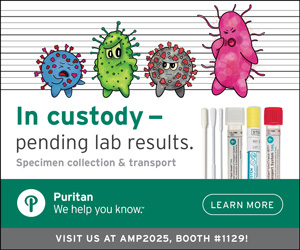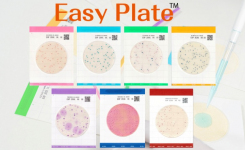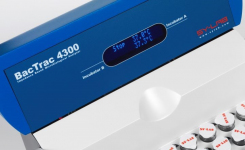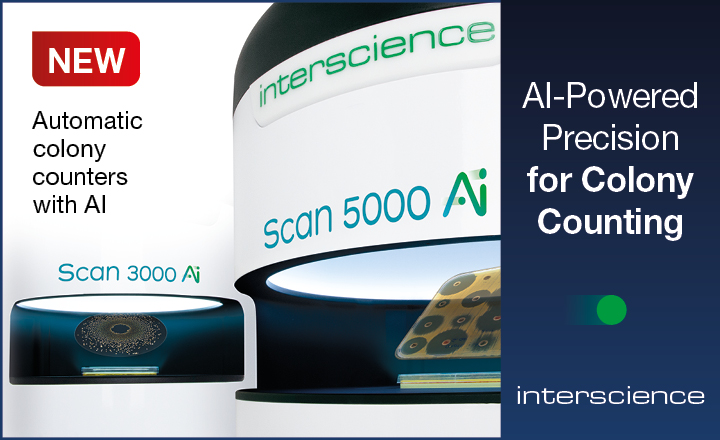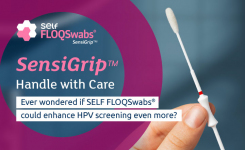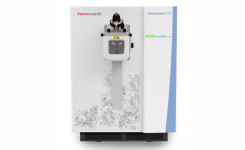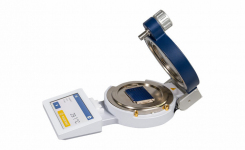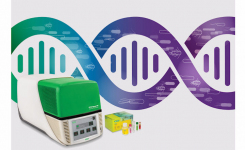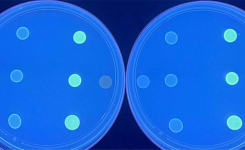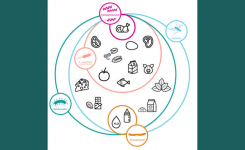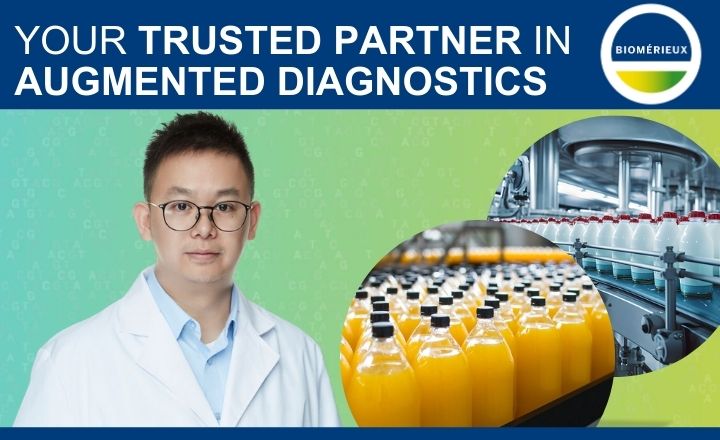
Key Points
- Traditional total viable counts for food and beverages are labour intensive and may require up to 72 hours or more to produce a result
- Rapid methods can reduce the need to place products on ‘hold’ while awaiting the results of total viable counts and other microbiological quality tests
- The range of rapid methods available for total viable counts is limited, but several existing technologies have the potential to cut labour costs considerably and achieve significant reductions in incubation time
Much of the development in rapid methods for foods and beverages over the last 30 years has been focused on food safety and the detection of microbial pathogens. This is not surprising, since the presence of Salmonella, Listeria, or E. coli O157 in food products is a serious public health issue. Nevertheless, microbiological testing for food quality purposes, while less high profile, is an important part of the workload of most food microbiology laboratories. For this reason, a wide range of technologies has been applied to develop rapid microbiological test methods aimed at quantifying food quality parameters, most notably the total viable count, or TVC.
Though widely used, the term TVC is something of a misnomer. Microbial populations in food samples vary enormously, depending on the characteristics of the sample and the processing conditions. For example, unprocessed natural foods are likely to contain a very wide variety of species, while heat processed products may only contain heat resistant spores. A TVC test can only provide an estimate of the microbial population based on those cells that are recoverable under the test conditions. Some viable cells may not be recoverable by any existing method, while others may only grow at low temperatures, in the presence of specific growth factors, or in the absence of oxygen. The aim of the TVC test is to detect and enumerate as high a proportion of the microbial population as possible. In practice, this usually means mesophilic, aerobic, or facultatively anaerobic bacteria, which account for the major part of the microflora in many foods.
A one-off TVC is of very limited value in the absence of additional information about the sample being tested. But as a means of regular monitoring of microbiological quality in food and drink samples it can be an extremely useful tool and there are good reasons for carrying out routine TVC tests.
1. Compliance with specifications– The specifications for many food ingredients and finished products contain microbiological criteria, often including a value for TVC. These criteria may be mandatory and set out in legislation, determined by a customer, or may have been developed in-house.
2. Trend analysis– Building up a database of TVC values for the same food product over an extended time period can be a very useful means of monitoring the production process. A gradual increase over time may indicate a problem with cleaning, or a build up of contamination within processing equipment. Rapid rises in TVC are often the first warning of operating failures. Action taken on the basis of rises in TVC may be important to prevent the development of food safety problems.
3. Determining shelf life– TVC values are a useful means of following overall microbial growth in a stored product over time and estimating the interval before microbial spoilage occurs (microbial shelf life).
Traditional TVC methods typically take at least 48 hours to produce a result, with some requiring incubation periods of 3-5 days. While this may not be a problem when the test is used to determine shelf life, the delay is undesirable for demonstrating compliance with microbiological criteria and for trend analysis and can result in products being placed ‘on hold’ while awaiting the results. Thus, rapid methods capable of reducing the time to a result are potentially very useful for food microbiology laboratories.
Methods
Sample storage and preparation
A very wide range of food and drink samples may be tested for TVC and the sample storage and preparation procedures depend very much on the nature of the sample. For example, dried foods are microbiologically quite stable and may not need to be refrigerated during storage, while chilled foods may contain bacteria capable of growth at refrigeration temperatures. Generally, it is advisable to test the sample as soon as possible, although frozen foods should first be thawed, preferably at <4oC and within 24 hours.
Typically, samples are prepared by making up a tenfold gravimetric dilution using a non-selective diluent, such as peptone salt solution, or buffered peptone water if microbial cells have been subjected to environmental stress. The initial dilution is then homogenised using a mechanical blender or a non-contact homogeniser to produce a suspension with a homogeneous distribution of microbial cells.
Traditional enumeration methods
A conventional TVC is determined using an aerobic plate count method. The industry standard reference method for food products is the recently revised ISO 4833-1:2013 (Microbiology of the food chain – Horizontal method for the enumeration of microorganisms – Part 1: Colony-count at 30oC by the pour plate technique). Briefly, the method requires the preparation of a series of ten-fold dilutions from the initial dilution. A 1 ml aliquot of each dilution is then dispensed into petri dishes, to which is added 12-15 ml of a molten, non-selective culture medium, such as plate count agar (PCA), at a temperature of 44-47oC. The plates are then rotated to mix the molten medium and the sample dilution, and allowed to solidify before incubation at 30oC for 72 hours. After incubation the visible colonies on selected plates (those showing more than 15 and less than 300 colonies) are counted and the result can then be calculated on the basis of the count and the dilution factor.
This basic method can be adapted according to the food sample being examined. For example, chilled foods often contain a high proportion of psychrotrophic bacteria, which may be damaged by exposure to high temperatures. In this case a spread-plate technique, where the inoculum is spread over the surface of a solidified medium, may replace the usual pour-plate method, and the incubation temperature may be reduced.
Although little is needed in terms of costly equipment, conventional TVC methods are labour-intensive and time consuming and require skilled staff. Nevertheless, conventional methods are still widely used in food microbiology laboratories. For this reason a number of instruments have been developed to assist with some of the more laborious operations. These include automated plate readers and counters, dilutors and plate pouring systems. Complete plating systems, such as the Spiral-Plater, are also available. While such automated devices can significantly reduce labour costs and preparation time, the incubation period remains lengthy (at least 48 hours).
(Note: Further details of automated instruments can be found in our method guide ‘Automating the Food Microbiology Laboratory’)
Rapid enumeration methods
Many different technologies have been applied to the problem of developing rapid TVC methods for foods. Only a few of these have been successful in the long term, although some have been developed further for other applications. For example, ATP measurement was originally intended to be a basis for rapid TVC methods, but problems with interference from non-microbial ATP resulted in the adaptation of the technology for rapid hygiene monitoring, where it has been notably successful. Most of the rapid methods developed to date have relied on culturing the microorganisms present in a sample and the early detection of growth, either directly, or indirectly.
Direct culture-based methods
There are several commercially available systems designed to simplify conventional manual plate count methods by substituting dehydrated medium contained in sheets or films for traditional agar plates. The film may be covered with a fabric layer or a membrane and the medium is rehydrated using a liquid sample or a dilution of a solid sample. The rehydrated film is then incubated and the microbial colonies develop on the surface, where they can be counted by conventional means. Some systems include a chromogenic medium incorporating a redox indicator, such as tetrazolium chloride, which causes bacteria to produce easily visible red colonies. Compared with conventional plate counts, these methods reduce the preparation time and are very space-efficient, but they still rely on the formation of visible colonies. Incubation times are typically 48 hours, so that the overall time saving is limited. Examples of such products with MicroVal and/or AOAC RI approval are Compact Dry™ TC from Nissui Pharmaceutical.
Indirect culture-based methods
In order to overcome the time limitations of detecting bacterial growth by looking for visible colonies, technologies have been developed that monitor indirect indicators of growth.
This idea has been applied to the dehydrated films described above in the form of the SimPlate® system from BioControl. The SimPlate is inoculated with a sample dilution in the same way as a film, but it has 84 wells built in to the plate and the medium contains a patented “Binary Detection Technology”, which can detect certain bacterial enzymes and produce a colour change. By examining the plate and noting which wells show the colour change, the TVC can be determined. The incubation time is reduced and the method is claimed to produce a result in 24 hours.
An automated solution is the TEMPO® 'automated quality indicator' system from bioMérieux. This employs a miniaturised most probable number (MPN) technique on a multi-well ‘card’ to enumerate bacteria in food samples. The media used in the system contain a fluorescent indicator so that the card can be scanned by a reader, which then automatically calculates a result expressed as colony forming units (CFU)/g of sample. A single TEMPO unit is capable of processing 500 samples each day, producing TVC results in 24-48 hours. This degree of automation is best suited to large laboratories handling large numbers of samples.
The Soleris™ system supplied by the Neogen® Corporation is similarly automated but utilises an LED and a photo detector to monitor colour changes caused by bacterial growth in a specially designed vial containing a growth medium and colour indicators. The vial is inoculated with a sample dilution and as bacteria grow they produce changes in pH and other biochemical indicators leading to a colour change in the vial. The instrument monitors each vial and records the time taken to produce a detectable colour change, which is related to the initial microbial count. Soleris is said to be capable of producing a result for TVC within 18 hours.
The BioLumix system supplied by BioLumix can enumerate The Total Aerobic Count using the vial’s sensor that detects production of CO2 by microorganisms, based upon the principle that CO2 is a universal metabolite produced by all microorganisms. The disposable vial contains a transparent solid sensor located at the bottom which changes its optical properties whenever CO2 diffuses into it. Only gases can penetrate the sensor; blocking liquids, microorganisms, and particulate matter. Consequently, the optical readings are not masked by the sample. CO2 generated by bacterial metabolism in the liquid medium placed above the sensor, diffuses into the sensor and interacts with an indicator reagent to provide an indication of the presence of the carbon dioxide.
Indirect growth detection can also be achieved by measuring changes in the impedance of the growth medium using a pair of electrodes. A number of devices based on this concept have been developed, though as far as we are aware only two types are still commercially available: the RABIT® system from Don Whitley Scientific and Sy-Lab’s µ-Trac® and BacTrac® instruments. Both can be used for TVC estimates in food samples, but calibration problems and capital costs have restricted their use in food microbiology labs.
An interesting alternative approach is exemplified by the Oculer Rapid 930 Series, developed jointly by Luxcel Biosciences® and Mocon Inc®. The Oculer system monitors oxygen levels using fluorescent oxygen-sensing probes and a fluorescence sensor embedded in the test vial. As the bacterial population in a well increases, so does the oxygen consumption until a threshold level is reached. The time taken to reach this threshold is related to the initial population in the sample and the rate of growth. After calibrating the instrument for the samples to be tested, the TVC for each sample can be calculated by the on-board software. The instrument is simple to operate and has been shown to produce a TVC result for raw meat samples in 1-12 hours, depending on the size of the initial population. Another system based on monitoring bacterial respiration is the DOX 60F instrument manufactured by Bio-Theta Ltd, which claims similarly rapid detection times, but is based on oxygen electrode technology.
Non-culture based methods
Few truly rapid methods for TVC have been developed that do not rely on culturing microorganisms in some form, but one exception is direct epifluorescent filter technique, or DEFT, originally developed to enumerate bacteria in raw milk. A liquid sample is filtered through a polycarbonate filter, which is then stained with fluorescent dye and examined by epifluorescence microscopy. DEFT is rapid and has been adapted for use with other food materials, but it requires highly skilled technicians and the results can be difficult to interpret.
Another non-culture-based technology used in food microbiology is flow cytometry. The bioMérieux Chemunex range of Flow Cytometry Analysers use a fluorescent labelling technique to detect viable cells directly in liquids by flow cytometry. Unless the microbial population is very low, no enrichment of the sample is required and results can be obtained in hours rather than days. The Chemunex technology is particularly suitable for manufacturers of filterable and non-filterable beverages, juices, softdrinks, soups, sauces and UHT Milk.
Future developments
To date, there has been little commercial development of molecular biology-based methods for determining TVCs in food samples. PCR-based detection techniques have produced dramatic time savings for pathogen detection testing, but have not been applied to microbial quality criteria. However, methods to determine the TVC of meat and other food samples by PCR have been published and Dutch microbial diagnostics company BioVisible BV manufactures a real-time PCR kit for bacterial total count. The QuickScan™ quantitative assay targets highly conserved sequences of the 16S ribosomal RNA gene common to almost all species of bacteria. When real-time PCR-based test kits of this kind become widely available and are properly validated against conventional methods, they will have the potential to provide genuinely rapid methods for TVC in foods and beverages.
Get the latest updates in Rapid Microbiological Test Methods sent to your email? Subscribe to the free rapidmicrobiology eNewsletter


